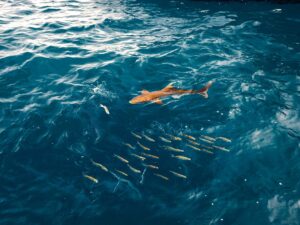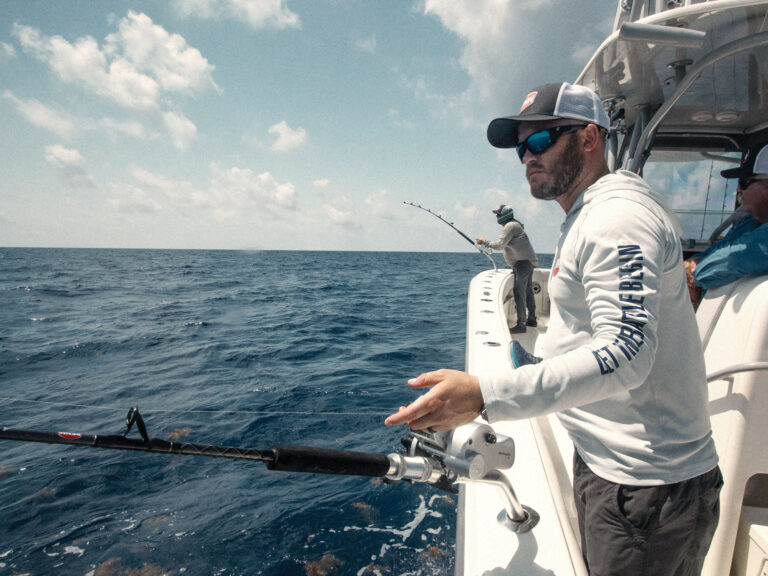My world is defined by two seasons: tarpon season and kayak season. Just as I see my skiff as a means to an end when ‘poon fishing, my kayak plays a vital role in taking me places to fish that I couldn’t reach any other way. Fishing from a kayak isn’t difficult, but there is a learning curve to success.
**Equipment
**Clearly, you’ll need a kayak, a paddle and fly-fishing tackle, but not as obvious is the requirement for items such as an anchor and a flotation device. Without an anchor, getting out of your kayak to chase tailing fish is out of the question. Even the slightest breeze can quickly skate an unanchored kayak away.
Anchors don’t have to be heavy or complex. I still use a 5-pound dumbbell I gave my wife as a Christmas gift 10 years ago. My anchor notwithstanding, a mushroom anchor actually works well for two reasons: 1) It doesn’t roll around in the kayak and make unwanted noise, and 2) without moving parts (like a small Danforth-type anchor), it remains silent when you slip it overboard.
A personal flotation device has a twofold value. First, a PFD of some kind is important for safety reasons, and state law may require it. Second, a flotation cushion or life vest provides excellent lower-back support while you’re sitting in the kayak shell. Rather than a fixed backrest that straps into the kayak, I use a PFD between my lower back and the seat for support. While the fixed backrest is comfortable, it makes what I refer to as “getting out of the saddle” (described below) more difficult.
**Less Is More
**I’m a minimalist when it comes to outfitting my kayak. Accordingly, I prefer to keep all my terminal fishing tackle in a fanny pack. Consolidating your gear so that it is immediately accessible becomes critical to angling success in the confines of a kayak. I recall times I’ve suddenly come upon a school of fish and needed to make a fast, quiet tackle change. You can’t do that if your rod and flies aren’t handy. You should reserve deck-hatch storage for food, drinks, rain gear, cameras and dry clothing.
You also need to consider rod-storage options. Depending on your personal preference and your boat’s layout, a rod holder can be useful. I didn’t want a commercial rod holder that would interfere with the fly line while I was casting or trying to quickly stow the paddle. I preferred something that allowed me to hold my rod out of my lap when I’m either “out of the saddle” or paddling. I constructed an unobtrusive PVC rod holder and mounted it to the kayak hump in the seat between my legs (see photo below). With this cheap custom creation, I can reach my rod from any position.
**In or Out
**There are only two ways to fish from a kayak – in or out. When the water depth exceeds 2 feet but is less than waist-deep, I like to get out and chase fish on foot. That’s because it’s difficult to hold your position in a kayak (even with an anchor) while casting, particularly in a breeze.
Getting out of one of these boats to fish is fairly straightforward – you find fish, drop your anchor, get out and have at them. You can get amazingly close to fish in a kayak, so close in fact you can literally cane-pole them. But because your line of sight drops so low, your view into the water becomes limited, and you often don’t spot fish until you’re on top of them. Accordingly, it’s important to not get out right next to fish, but rather, quietly paddle a safe distance away and then get out and stalk. Kayaks can prove extremely stealthy, but you’ll blow your cover if you bang around getting in or out of them.
The deeper the water you anchor in, the more balance you need to keep from “turtling” while getting out. In this case, you must keep your body weight over the centerline to maintain balance while you swing your legs out. To get in, you first need to sit with your weight over the centerline and then swing your legs in. With practice, you’ll be able to get in or out of your boat without flipping, even in deeper water.
Many times you can’t get out and chase fish, particularly when you’re over a soft bottom or in extremely shallow or deep water. In these instances, you’re better off fishing directly from the kayak. With practice anyone can learn to cast while either in the seated position or straddling the kayak – what I call “out of the saddle.” Typically, the casts you make from a kayak are very short, so you won’t need to strip out much line.
Before you try to cast in or on the kayak, you need to remember to stow the paddle out of the way. Seasoned kayakers developed a fast, quiet and unobtrusive method of doing this – they run a length of tight cord between the pad eyes on the bow and the left or right front deck. For stowage, they slip the paddle blade under the cord, and the blade’s contour holds it snuggly in place.
Once you stow the paddle, you can cast from a seated position. Since your range of motion is limited from the kayak, try to anchor the boat in a position that affords you the greatest movement.
I actually prefer a different method of casting that involves straddling the kayak deck directly behind the seat. This allows me to use the molded seat as a casting basket, gives me better visibility since it raises me up a bit higher and, most important, allows greater mobility for casting. This method is easily learned and deadly effective when fishing in less than 16 inches of water because you can often use your feet to anchor the kayak for the cast. As stated earlier, I use a PFD for safety and back support because when I want to get out of the saddle, I simply slide backward out of the seat onto the rear deck, and my cushion conveniently slides with my butt out of the way. I can even paddle for short periods in this position to chase tailing fish in the shallows. I’ll admit, the first few times you climb in or out or try to make a cast from the kayak, it’ll feel awkward and unbalanced, but it won’t take long to get the hang of it.









